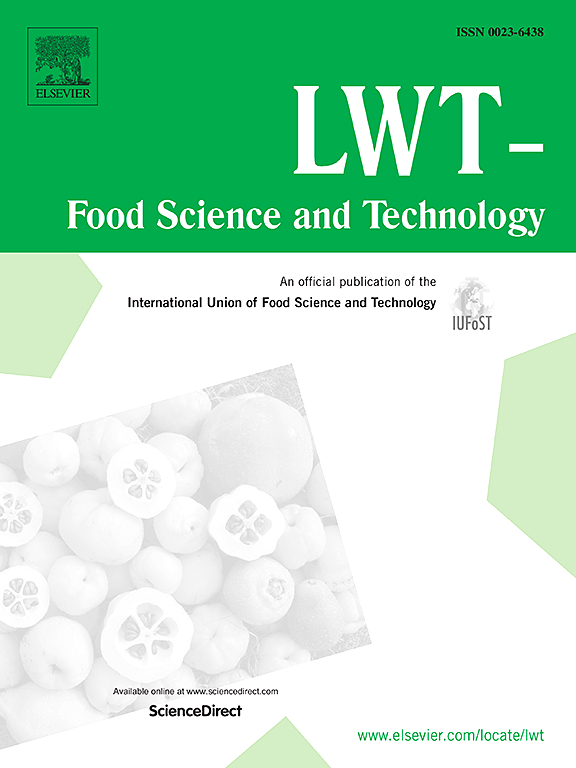Fabrication and characterization of soy isoflavones-oat β-glucan complexes: Improvement on the antioxidant activity and release rate
IF 6
1区 农林科学
Q1 FOOD SCIENCE & TECHNOLOGY
引用次数: 0
Abstract
The interaction between polyphenols and polysaccharides has the potential to enhance the stability and antioxidant activity of natural polyphenols. This study investigated the complexation between soy isoflavones (SI) and oat β-glucan (OBG) under different conditions (ratio, pH, and temperature). When the ratio was 1:1, pH was 5 and 40 °C, the binding rate and turbidity were 65.1% and 0.461. Additionally, in comparison to SI alone, it was observed that a higher binding rate correlated with an increase in phenolic hydroxyl groups present, which subsequently enhanced the ABTS•+ scavenging rate. After digestion, these complexes dissociated to expose additional active sites, resulting in superior antioxidant capacity compared to SI alone, and more SI was released (21.4%). Transmission electron microscopy (TEM) confirmed successful preparation of spherical complexes. Fourier-transform infrared (FT-IR) spectroscopy and nuclear magnetic resonance (NMR) analyses revealed that hydrogen bonding served as the primary binding force between SI and OBG. Furthermore, X-ray diffraction (XRD) and differential scanning calorimetry (DSC) demonstrated that SI was incorporated into the network structure of OBG by inclusion. This study elucidates both the interaction mechanism between SI and OBG as well as their enhancement of antioxidant capacity, providing valuable theoretical insights for designing dietary fiber and polyphenol systems.
求助全文
约1分钟内获得全文
求助全文
来源期刊

LWT - Food Science and Technology
工程技术-食品科技
CiteScore
11.80
自引率
6.70%
发文量
1724
审稿时长
65 days
期刊介绍:
LWT - Food Science and Technology is an international journal that publishes innovative papers in the fields of food chemistry, biochemistry, microbiology, technology and nutrition. The work described should be innovative either in the approach or in the methods used. The significance of the results either for the science community or for the food industry must also be specified. Contributions written in English are welcomed in the form of review articles, short reviews, research papers, and research notes. Papers featuring animal trials and cell cultures are outside the scope of the journal and will not be considered for publication.
 求助内容:
求助内容: 应助结果提醒方式:
应助结果提醒方式:


